Search Results
Fine Jewelry University Articles matching: “all 18k gold markings”
Showing only FJU Article results. Click here to show all results.
Fine Jewelry University (Show All FJU Articles)
-
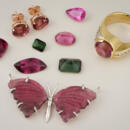
Gem in the Spotlight: Tourmaline
… the power to grant enlightenment, give power over spiritual affairs, reconcile opposites, and change base metals to gold. Tourmaline has a special place in our hearts as California natives because it is one of the few gems that are found… of modern gemology, most tourmaline was believed to be ruby, sapphire, or emerald. Gemology of Tourmaline Gemologically speaking, tourmaline is its own mineral and not a species or member of a different family (unlike emerald and …
-
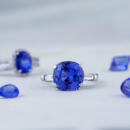
Gem in the Spotlight: Tanzanite
… tanzanite in the world. The tiara also contains 913 diamonds and 803 tsavorite garnets all set in 18 karat white gold. It is owned by former Apple CEO Michael Scott who routinely loans it out for display at museums. Care and Cleaning of … were still underground. Without heating, most tanzanite would be a brown color, similar to smoky quartz. The very small percentage of tanzanite that isn’t heated and is still pretty enough for jewelry displays trichroism. Trichroism is …
-
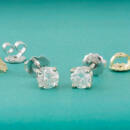
Styles of Earring Backs
… Irritant – If used with costume jewelry made of non-precious metals, it may cause irritation to sensitive skin. Gold options found on more valuable jewelry do not typically have this problem. Lever Backs (European Backs) Lever backs, …expanding your general jewelry knowledge. Keep reading; we have your answers. Friction Backs (Butterfly Backs) Also called “butterfly backs,” and sometimes “push backs.” These are undoubtedly the most common style of earring back. They …
-
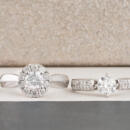
Anatomy of a Ring
… never know it was sized looking at the shank with your naked eye. Over time, the shank can wear thin—yes, even gold and platinum can wear away. In such cases a jeweler can “re-shank” the ring by replacing the metal at the bottom of the … be no ring without the shank. If the ring has a distinct design feature on the top part, the ring shank is generally said to start at the point that the design stops. A jeweler will usually add or remove metal from the bottom of the …
-

How Are Lab Grown Diamonds Made?
… the imagination of scientists and visionaries alike. Just like the alchemists of old who sought to turn lead into gold, many have tried to achieve this impressive feat. We have only recently been able to produce gem quality, lab grown …. Many attempts were made to reproduce his techniques with some reported successes, but none could ever be scientifically verified. The quest continued. Diamonds are a crystalline form of carbon, and so making artificial carbon crystal …
-
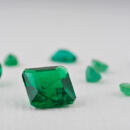
Gem in the Spotlight: Emerald
…and Mrs. O. Roy Chalk in 1972 and can be seen on display at the National Museum of Natural History in a platinum and gold ring surrounded by 60 pear-shaped diamonds. According to workers at the Muzo mine in Columbia, it is one of the … the stone in the desired liquid (oil, resin, etc.) inside of a vacuum chamber. Then a vacuum is applied which pulls all of the air out of the cracks and draws the filler into place. Finally, pressure is released back into the chamber …